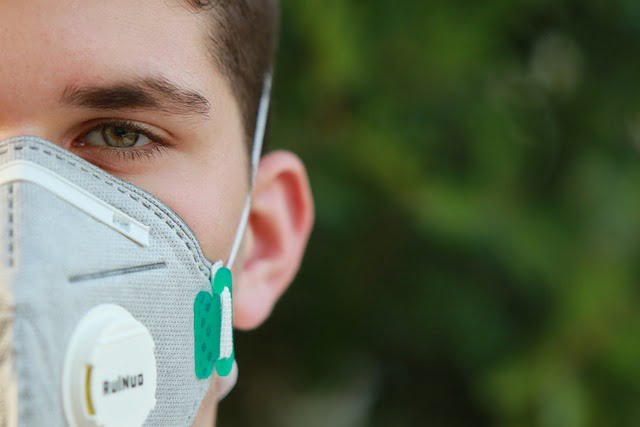Transfer of bodily fluids is one of the major culprits behind the transmission of infectious diseases from one individual to another. Therefore, if one aims to reduce the incidence of infections, the focus has to be given to restricting the droplets of saliva, blood, and other body fluids from being inhaled via the oral or nasal cavity. One measure that is to be taken in this regard is covering one’s mouth and nose by wearing a mask. A wide range of masks are available in the market which have varying efficacies. In this article, a comparison has been made between two such face masks i.e. N95 and KN95 masks based on their characteristics and efficiency.
What are N95 and KN95 masks?
Both N95 as well as KN95 are respirators that are made and tested according to US and Chinese standards respectively. They have the ability to filter the fine particulate matter (PM) up to 3 microns with a 95% efficiency. For N95, the CDC National Institute for Occupational Safety and Health (NIOSH) regulates its manufacturing according to the pre-set criteria.
However, KN95 is a mask made and tested according to Chinese healthcare authorities. Although both the masks are efficient in performance, N95, unlike KN95 has ear loops which generally give a looser fit, and comes with straps that ensure that it is fixed well at its place once worn.
Difference between N95 and KN95 masks
Both N95 and KN95 illustrate slight differences that usually go unnoticed owing to their comparable quality and efficacy. These differences are based on various parameters such as on flow rate, inward flow, test agents, etc. The following table indicates the differences between N95 and KN95 respirators.
| Parameters | N95 | KN95 |
| Production rights/locality | USA | China |
| Standard | NIOSH-42 CRF 84 | GB2626-2006 (updated to GB2626-2019) |
| Filter performance (i.e. 0.3 microns) | ≥95% | ≥95% |
| Flow rate | 85 L/min | 85 L/min |
| Test agent | NaCl | NaCl |
| Force applied | -245 Pa | -1180 Pa |
| CO2 clearance requirement | N/A | ≤1% |
| Total inward flow | N/A | ≤8% |
| Inhalation resistance | ≤343 Pa | ≤350 Pa |
| Exhalation resistance | ≤245 Pa | ≤250 Pa |
| Exhalation valve leakage requirement | Leak rate ≤ 30 mL/min | Depressurization to 0 Pa ≥ 20 sec |
| Cost | Higher than KN95 | Lower than N95 |
Keeping in view the above-mentioned specifications, it can be manifested that both masks are capable of filtering PM 2.5, non-oil-based particles, and bioaerosols such as viruses.

Both N95 and KN95 can be purchased from Health Supply 770 by simply visiting their website. They have a wide range of medical products with the best prices.
Frequently asked questions regarding KN95 and N95
Although wearing a mask in a proper way has been frequently taught by the media during the recent COVID-19 pandemic, users are still confused regarding their storage or recycling. Here are some of the commonly asked questions about KN95 and N95 respirators which are being addressed based on the officially published guidelines:
1. Can I reuse KN95 and N95 masks?
Yes, both KN95 and N95 can be reused by the same for several days. According to the experts from the School of Public Health, West Virginia University, to improve the fit, a surgical mask or a regular cloth mask can be worn above a KN95. However, no such measure is needed for N95 as it already has a tighter fit.
2. How long should I wear the same mask?
Ideally, an N95 or KN95 mask should be replaced after 72 hours of use. However, a mask once used, if not wet, soiled, or deformed, can be stored for future use. With a proper gap, the same masks can be worn again and again until they become visibly contaminated.

3. Can KN95 and N95 be washed?
No, both KN95 and N95 should not be subjected to washing. This is due to the fact that these masks have a static charge for the entrapment of microbes such as viruses. By washing them, these viruses can be spilled into other clothes or the washing liquid thus causing contamination. Moreover, the mask, once washed, loses its ability to function properly.
4. How can I store a used KN95 or N95 mask?
An in-use KN95 or N95 mask is to be stored in a breathable container such as a paper bag. The storage container must also be properly named to avoid the chances of accidental usage by another wearer.
Conclusion
The use of personal protective equipment for healthcare providers has always been given importance. However, due to the COVID-19 pandemic, wearing masks, gloves, and face shields has become a norm among the people.
In this regard, from the masks prepared at home using a piece of cloth to those manufactured and tested by the respective authorities such as N95 and KN95 among others are available to choose from. When compared, both N95 and KN95 have proven to be equivalent in terms of their efficacy and performance.

PhD Scholar (Pharmaceutics), MPhil (Pharmaceutics), Pharm D, B. Sc.
Uzma Zafar is a dedicated and highly motivated pharmaceutical professional currently pursuing her PhD in Pharmaceutics at the Punjab University College of Pharmacy, University of the Punjab. With a comprehensive academic and research background, Uzma has consistently excelled in her studies, securing first division throughout her educational journey.
Uzma’s passion for the pharmaceutical field is evident from her active engagement during her Doctor of Pharmacy (Pharm.D) program, where she not only mastered industrial techniques and clinical case studies but also delved into marketing strategies and management skills.

















